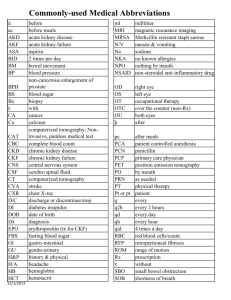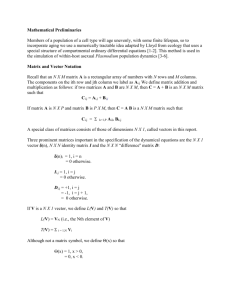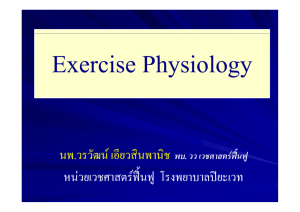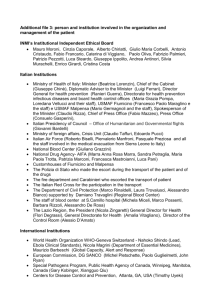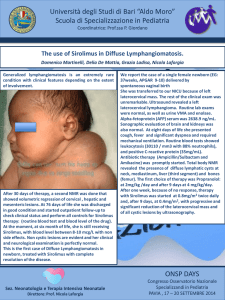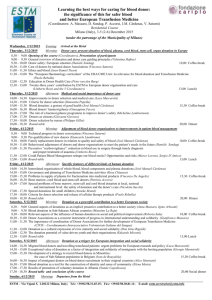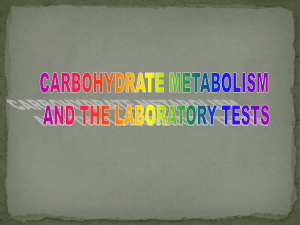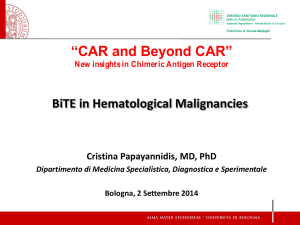MULTIPLE ALLELES
advertisement
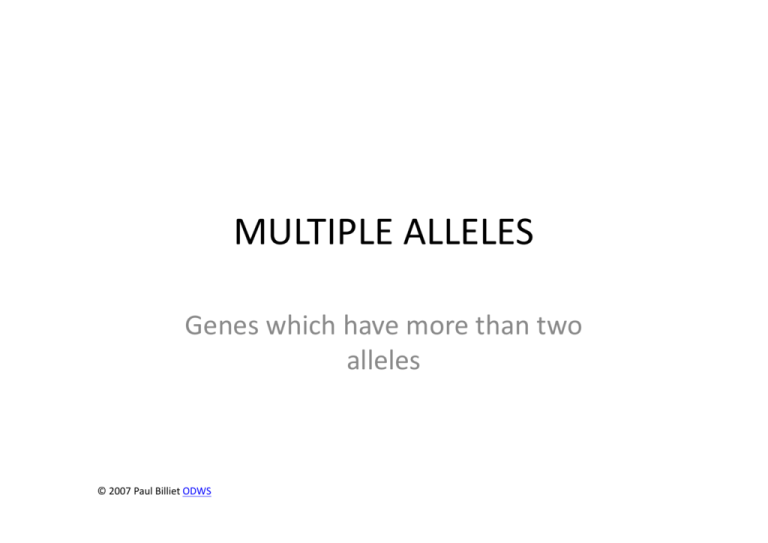
MULTIPLE ALLELES Genes which have more than two alleles © 2007 Paul Billiet ODWS Genes and their alleles • About 30% of the genes in humans are di‐ allelic, that is they exist in two forms, (they have two alleles) • About 70% are mono‐allelic, they only exist in one form and they show no variation • A very few are poly‐allelic having more than two forms © 2007 Paul Billiet ODWS Combinations • Di‐allelic genes can generate 3 genotypes • Genes with 3 alleles can generate 6 genotypes (3+2+1) • Genes with 4 alleles can generate 10 genotypes • Genes with 8 alleles can generate 36 genotypes © 2007 Paul Billiet ODWS The ABO blood system • This is a controlled by a tri‐allelic gene • It can generate 6 genotypes • The alleles control the production of antigens on the surface of the red blood cells • Two of the alleles are codominant to one another and both are dominant over the third • Allele IA produces antigen A • Allele IB produces antigen B • Allele i produces no antigen © 2007 Paul Billiet ODWS AB0 blood grouping system Blood group A If you belong to the blood group A, you have A antigens on the surface of your RBCs and B antibodies in your blood plasma. Blood group B If you belong to the blood group B, you have B antigens on the surface of your RBCs and A antibodies in your blood plasma. Blood group AB If you belong to the blood group AB, you have both A and B antigens on the surface of your RBCs and no A or B antibodies at all in your blood plasma. Blood group O If you belong to the blood group O (null), you have neither A or B antigens on the surface of your RBCs but you have both A and B antibodies in your blood plasma. The ABO blood system Genotypes IA IA IA IB IAi IB IB IBi ii Phenotypes (Blood types) A AB A B B O Note: • Blood types A and B have two possible genotypes – homozygous and heterozygous. • Blood types AB and O only have one genotype each. © 2007 Paul Billiet ODWS Blood types and transfusions • People who are Type A blood produce antibodies to agglutinate cells which carry Type B antigens They recognise them as non‐self • The opposite is true for people who are Type B • Neither of these people will agglutinate blood cells which are Type O Type O cells do not carry any antigens for the ABO system Type O cells pass incognito • What about type AB people? © 2007 Paul Billiet ODWS Donor‐recipient compatibility Recipient Type A B AB O A Donor B AB O Note: • Type O blood may be transfused into all the = Agglutination other types = the universal donor. • Type AB blood can receive blood from all = Safe transfusion the other blood types = the universal recipient. © 2007 Paul Billiet ODWS Why do individuals produce antibodies to antigens they do not have? • The "A“ and "B" antigens are also produced by some other plants and microorganisms. Thus, individuals who do not recognize one or more of these antigens as "self" will produce antibodies against the plant or microbial antigens. • These antibodies will also react with human antigens of the same kind whether introduced via a blood transfusion or a tissue graft. What do co-dominant genes mean? This meant that if a person inherited one A group gene and one B group gene their red cells would possess both the A and B blood group antigens. These alleles were termed A ( which produced the A antigen ), B (which produced the B antigen) and O (which was "non functional"and produced no A or B antigen) 1 gene 3 alleles Possible Blood group Genotypes Parent Allele A B O A B O Possible Blood group Genotypes Parent Allele A A B O AA AB AO B AB BB BO O AO BO OO
